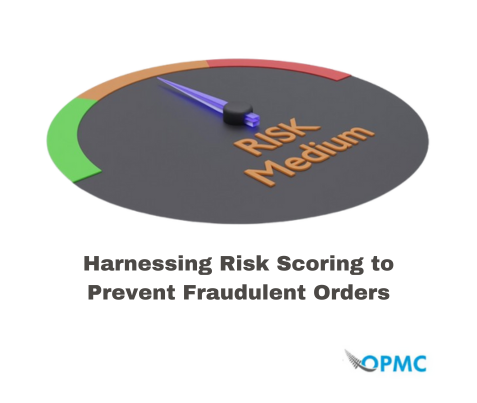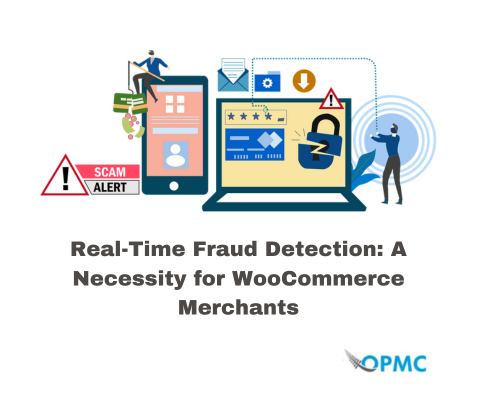As a business owner, it’s important to take steps to protect your business from fraud. This can include implementing robust security measures, training employees to recognize and report suspicious activity, and regularly monitoring your accounts and transactions. By being proactive and taking steps to prevent fraud, you can safeguard your business and reduce the risk of financial losses.
Fraud is a growing problem for online stores and ecommerce businesses. No matter how big or small your business, it’s crucial to have suitable systems in place to detect and minimize fraudulent transactions as quickly as possible.
The most common fraud scenario is when an employee steals money from their employer’s bank account by creating false invoices or receipts on their computer, which can often go undetected if they use multiple devices to do this. The most frequent problem with ecommerce businesses are chargebacks or velocity attacks.
This is why we recommend you check your accounts regularly and train your staff on how best to deal with any potential fraudulent activity within their roles at work. Here are some steps you can take with Xero, WooCommerce, and anti-fraud protection.
1 – Separate Team Control of Accounts
Create a role for authorizing payments and another role for approving invoices. Assign these roles to your staff members with the appropriate permissions. The goal is to separate who has access to what, so there is no single person with complete control unless it is yourself or someone of an equal partnership with as much invested in the business.
Review the access to bank accounts regularly, ensuring that only those who need it can access the money. Keeping an eye on your money and cash flow is not being rude. On the contrary, it is essential to protect your business from internal and external fraud.
2 – Add an Outward Facing Anti-Fraud Plugin
While Xero can quickly locate problems in your accounting and works effectively to uncover internal threats, you also want a frontline defense against any outward-facing ecommerce processes. Using the WooCommerce Anti-Fraud tool from OPMC adds a thick layer of protection by assigning scores to orders placed to detect fraud. The higher the score, the higher the risk of fraud.
This way, you have a system in place that will flag and detect any suspicious email address, alert when there are orders from a restricted country, block IP addresses, require verification of details, and so much more. This is an easy-to-use integration that removes the stress of ecommerce frauds draining your bank account and compliments Xero internal protections nicely.
3 – Only Let Specific Team Members Change Xero Details
You can give different users access to other parts of your business. For example, you might want one group of users to manage sales while another handles customer support. You could also give a single person access to multiple accounts and tasks.
You can restrict access by creating a user group and adding that group to the bank account in Xero. Then, you’ll need to enable this feature for the user who will have control over the bank account details—like changing your banking information or adding new people as authorized signatories—and add them as a member of that user group.
4 – Separate Accounting & Payment Details
Another critical step is splitting out the accounting and payment functions. You can do this by using Xero with a service provider, or you could keep all of your accounts in Xero but use a third-party provider to pay your bills, and then import those payments into Xero.
A good tool for this is the WooCommerce Xero plugin integration from OPMC. This automates the transfer of details from your ecommerce storefront to your Xero backend accounting so you can easily track and verify inventory, customer details, orders, and more.
The reason for splitting these functions is that fraudsters are more likely to try something when they have access to both sides of the equation—in other words if they can create transactions in order books and also send money out from bank accounts.
5 – Run Financials & Monitor Your Accounts
You can protect your business from fraud by running regular financial audits. Audit your accounts regularly and use a fraud detection tool like WooCommerce Anti-Fraud tool from OPMC to help you spot irregularities in your company’s data.
As a business owner, staying on top of your finances is important. Regularly review your Profit and Loss statement and Balance Sheet in Xero. This will help you spot any discrepancies or fraud that may be occurring in your business. Don’t be scared to log in to different accounts as well to ensure the information is accurate to the cent.
Wrapping it Up
Business fraud is a massive problem for small businesses, but it doesn’t have to be. You can take plenty of simple steps today to protect your online store and ecommerce business to keep it safe from fraudsters. By following these tips, your business will be on the right track towards staying safe in this increasingly complex and changing world.




